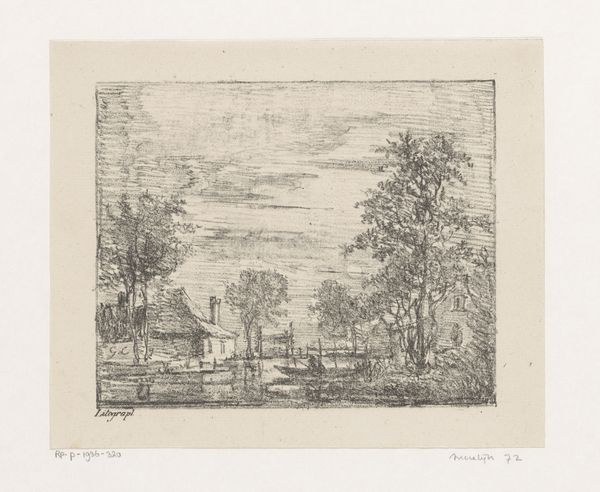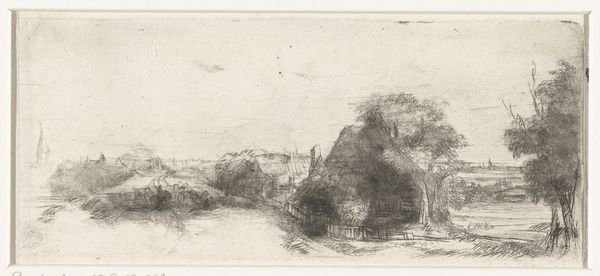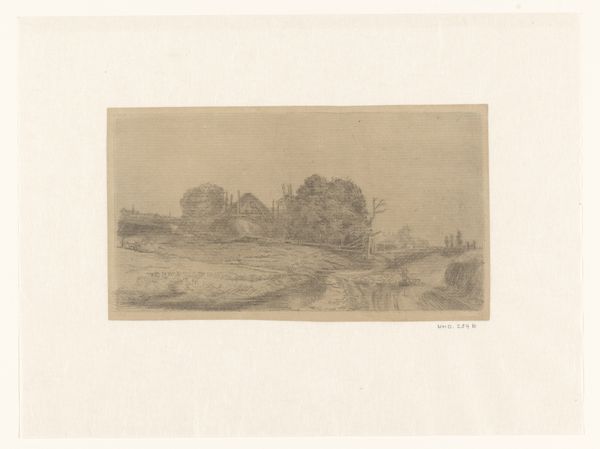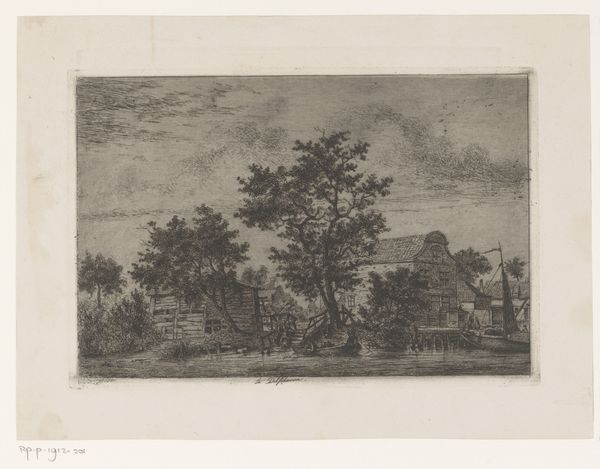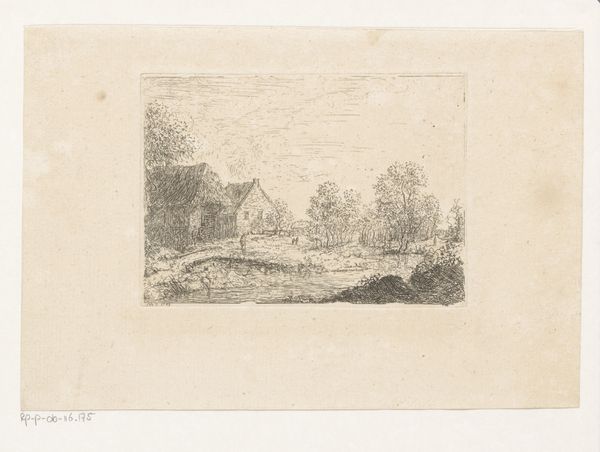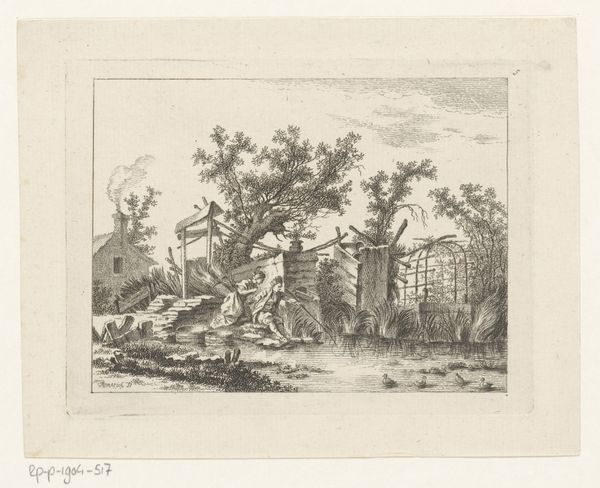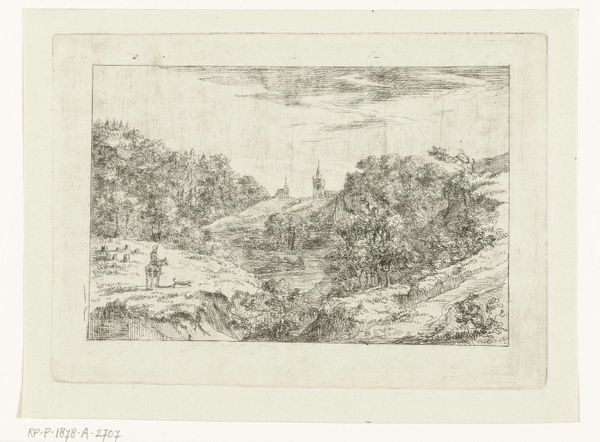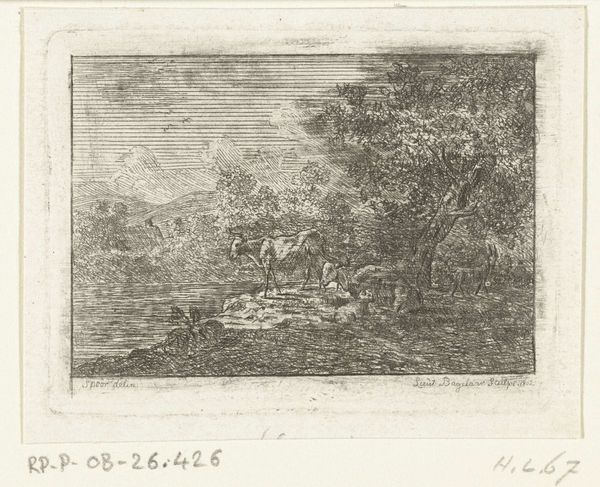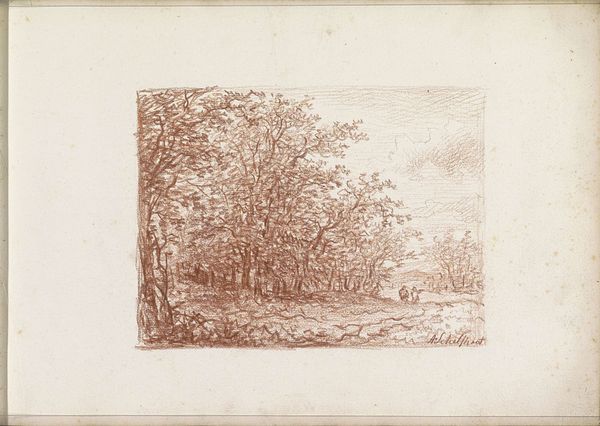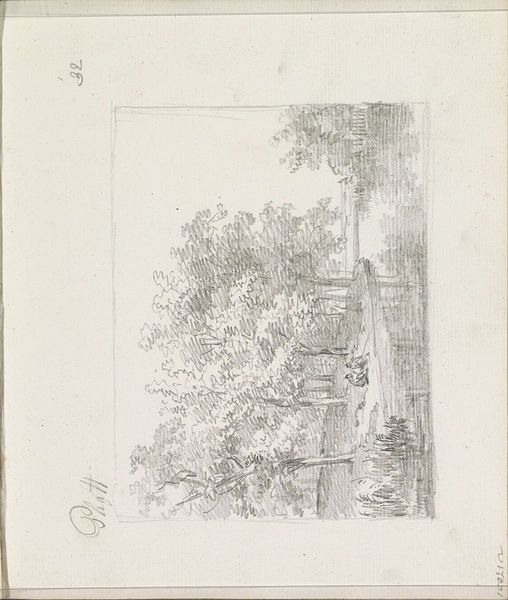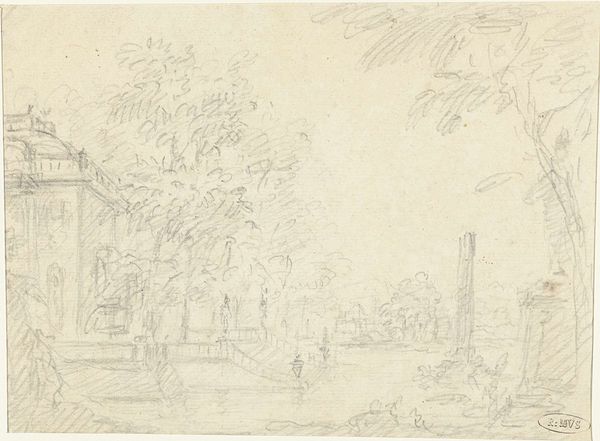
Landschap met boerderij bij sloot met bruggetje en schetsjes in marge 1809 - 1869
0:00
0:00
drawing, print, etching
#
drawing
# print
#
etching
#
landscape
#
etching
#
cityscape
Dimensions: height 125 mm, width 199 mm
Copyright: Rijks Museum: Open Domain
Editor: Here we have Dirk Vis Blokhuyzen's etching, "Landschap met boerderij bij sloot met bruggetje en schetsjes in marge," dating from 1809 to 1869. The landscape seems so calm, but it's juxtaposed with all these rough sketches around the edges. What do you see in this piece? Curator: This print isn't simply a landscape, but also a document of artistic practice. It provides glimpses into the artist’s thought processes, and it asks, for whom were these images created? Do you see how the main landscape scene adheres to 19th-century ideals of pastoral beauty? What stories might it obscure? Editor: So you're saying we should consider whose perspective is represented? Curator: Exactly. Whose labor built the farm? Whose lives are rendered invisible in this "idyllic" scene? Art doesn't exist in a vacuum; it reflects the social and economic structures of its time. The wealthy owned the farms; farmers toiled in their fields. The art shows beauty; the farms are based on uncompensated and hard labor. Who benefits from the land and beauty? Editor: It's strange to consider that behind the calmness there were power structures at play. The artist almost seems oblivious to them! Curator: Perhaps, but recognizing those power dynamics helps us view the work critically. It allows us to challenge assumptions and deconstruct dominant narratives in art history. It challenges us to remember that seemingly bucolic visions have their underside and that landownership can tell its own tale of inequality. Editor: I hadn’t considered landscape art in this light before. It makes me want to examine other pastoral scenes differently. Curator: Precisely! Approaching art with an understanding of its social and political context gives it a renewed urgency and complexity.
Comments
No comments
Be the first to comment and join the conversation on the ultimate creative platform.
